#Adelaide Robineau
Photo

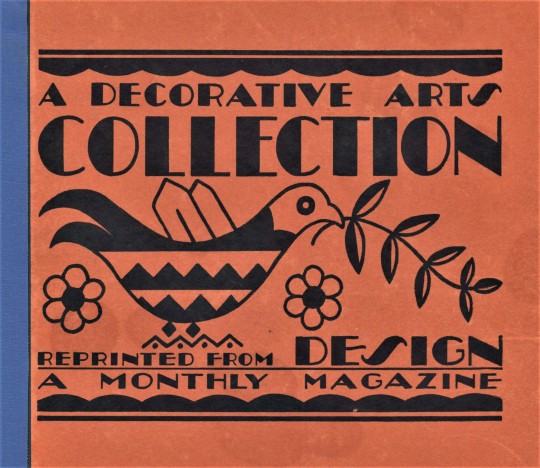
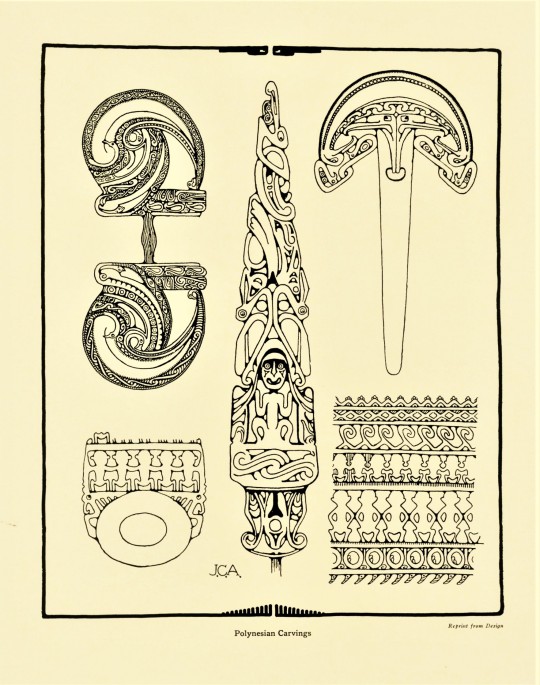
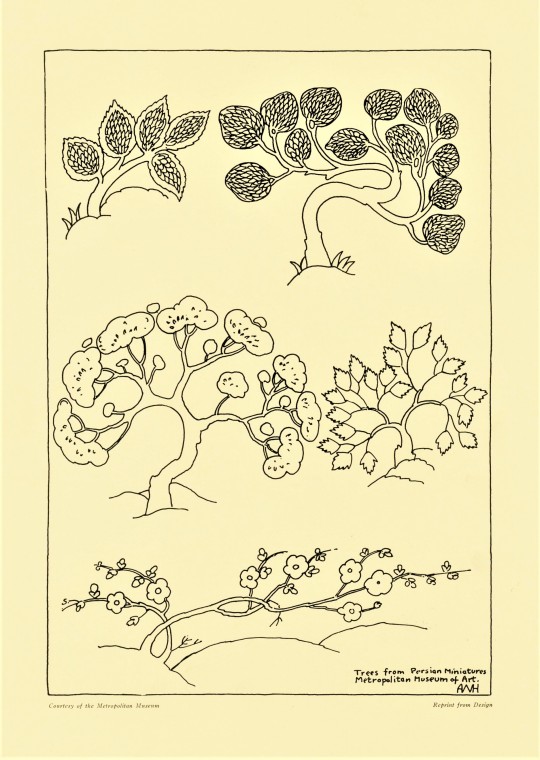
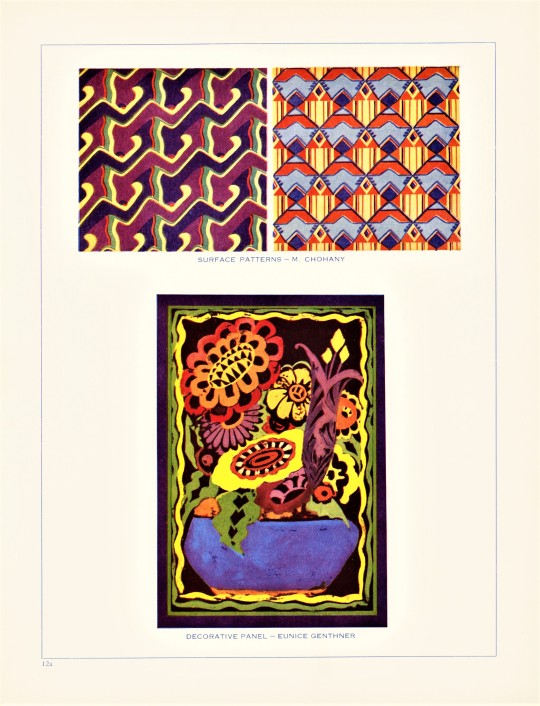
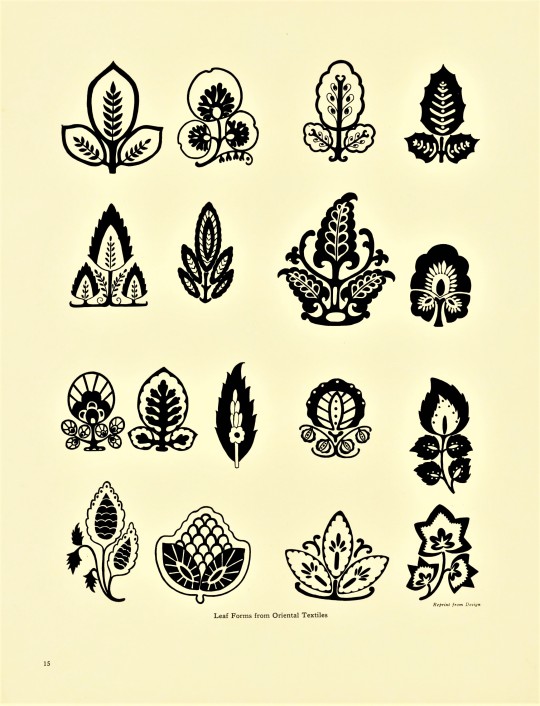
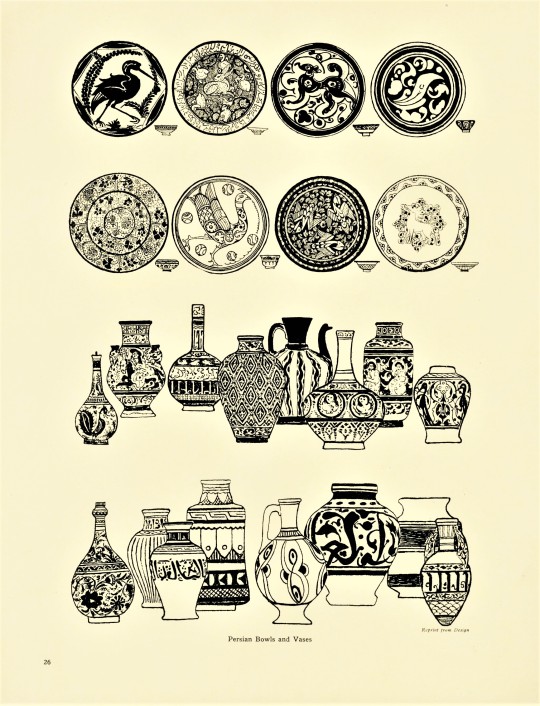
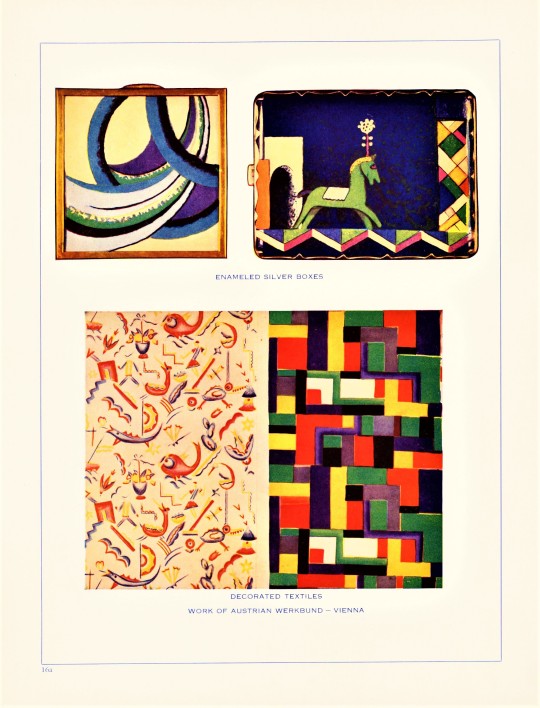
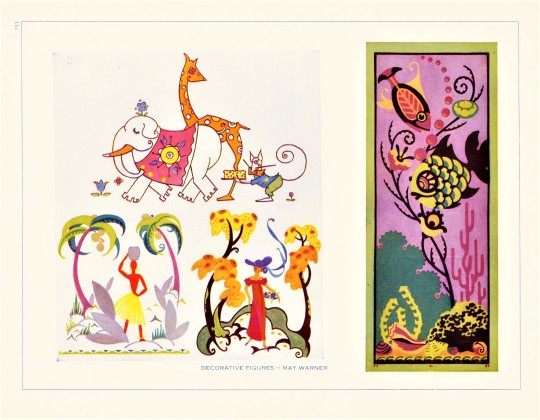
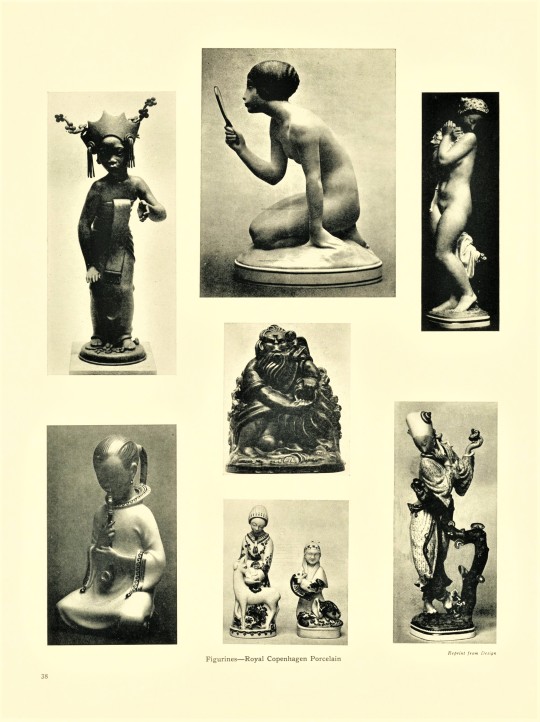
Decorative Sunday
In 1899, American potter and ceramicist Adelaide Alsop Robineau founded the monthly publication Keramic Studio with her husband, the French ceramics expert Samuel E. Robineau. Initially, the ceramic artist and social reformer Anna Byford Leonard shared editing responsibilities, but within a few years, Adelaide took over sole editorship and the publication stayed in print under that name for twenty years. The above images, collected in a portfolio of 50 plates (40 black and white and 10 color), were reprinted images from a monthly magazine called Design - Keramic Studio, published in Syracuse by the Keramic Studio Publishing Company, date unknown.
The earliest incarnation of Design - Keramic Studio I have been able to locate is from May 1919, suggesting Design - Keramic Studio was the next incarnation of Keramic Studio, which had concluded its run in that name in 1919. Design - Keramic Studio took a broader look at the decorative arts beyond ceramics and was marketed toward “the art teacher, student and designer.”
Adelaide Alsop Robineau passed away in February of 1929, and art educator Felix Payant took over editorship of the magazine, which was rebranded as Design but continued to bear Keramic Studio as a publisher for a number of years. Payant remained in his role as editor until 1947. Eventually the magazine relocated to Indianapolis and continued publishing until Fall of 1977 under a number of different publishers.
Find more of our Decorative Sunday posts here.
-Olivia, Special Collections Graduate Intern
#Decorative Sunday#Keramic Studio#Adelaide Alsop Robineau#Adelaide Robineau#Anna Byford Leonard#Anna B. Leonard#Ceramics#Pottery#Decorative Art#Decorative Arts#Decorative Plates#Design#Design Keramic Studio#Felix Payant#olivia
69 notes
·
View notes
Text
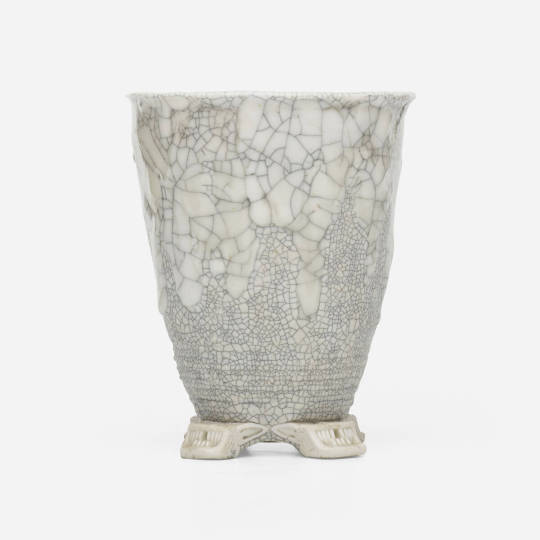
Adelaide Robineau
Vase
USA, 1927
Carved and crackle-glazed porcelain
7 h × 5½ dia in (18 × 14 cm)
#all about that glaze 'bout that glaze#adelaide robineau#united states#20th century#1920s#vase#vessel#porcelain#crackle#auction#ceramics
1 note
·
View note
Photo
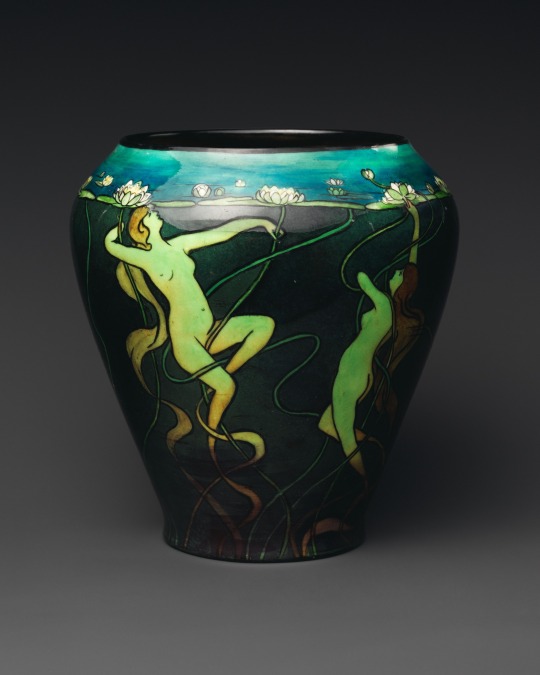
Vase with Water Nymphs by Adelaide Alsop Robineau
54 notes
·
View notes
Photo


The Apotheosis of the Toiler, Adelaide Alsop Robineau, 1910
3 notes
·
View notes
Photo

Adelaide Robineau - Vase USA, c. 1915. Crystalline glazed porcelain/ 10 × 15 cm. x
35 notes
·
View notes
Photo

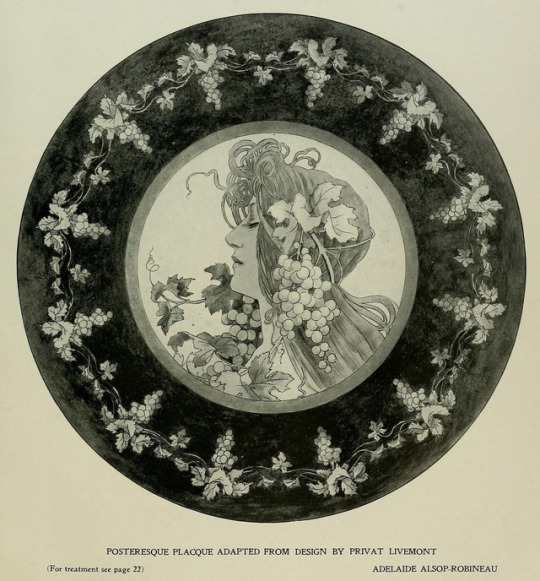

We wanted to serve up some great content, so we’re dishing out some of Keramic Studio’s wonderful plate designs. Find all 20 volumes (save 1) in our digital library.
116 notes
·
View notes
Photo

Vase, Adelaide Alsop Robineau, American, 1865–1929, 1910, Saint Louis Art Museum: Decorative Arts and Design
https://www.slam.org/collection/objects/9762/
31 notes
·
View notes
Photo

Vase, Adelaide Alsop Robineau, 1926, Art Institute of Chicago: American Art
A technical tour-de-force, this diminutive vase displays the exquisite crystalline glaze perfected by Adelaide Alsop Robineau after years of experimentation. She most often applied this glaze to small vessels that were intended for cabinet display. The jewel-like quality and spontaneous appearance of the crystals derive from the glaze formula and firing technique. Created by the prominent artist-potter only three years before her death, this vase exemplifies the unadorned aesthetic preferred by modern studio ceramists. Gift of Mr. and Mrs. Morris S. Weeden through the Antiquarian Society
Size: 12.7 × 13.0 × 13.0 cm (5 × 5 1/8× 5 1/8 in.)
Medium: Porcelain
https://www.artic.edu/artworks/152749/
1 note
·
View note
Text
The Apotheosis of the Toiler
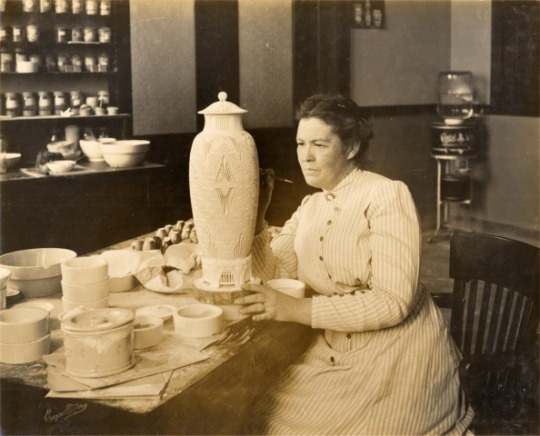
Adelaide Alsop Robineau was born in 1865, moving to Syracuse, New York at the age of thirty-five. She began her career as a China painter, as within the industry at the time, women were allowed to decorate the ceramic form but were not permitted to throw the form itself. China painting was also a popular “women’s hobby” at the time. Robineau found this to be an entry point into the world of ceramics, studying painting under William Merritt Chase and then ceramics under Charles Binns at Alfred University. She, with the assistance of her husband Samuel, established an artist’s studio and the first American magazine to focus on ceramic arts and design, Keramic Studio.
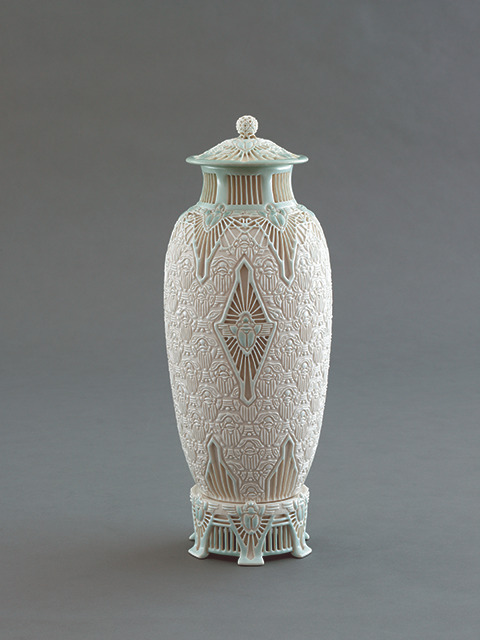
Known today as the “Mona Lisa of the ceramics world”, Adelaide Alsop Robineau’s magnum opus is colloquially named The Scarab Vase (1910) for its scarab beetle motif adorning the surface.

Ancient Egyptians regarded the scarab beetle as holy, and it was used as a symbol of day and night, life and death, and immortality. The beetle is also known as a “dung beetle” for its habit of rolling a ball of dung to the entrance of its home each night and rolling it away when it emerges in the morning. Robineau’s reference was in part to reference the daily cycle of a laborer and in part to evoke the phenomenon of Egyptomania, the European interest in Egyptian culture following Napoleon’s Egyptian Campaign of the early 1800s.

The vase itself is porcelain, standing at just over sixteen inches tall. Robineau is rumored to have spent nearly one thousand hours bringing it to full realization. She began by throwing the porcelain clay body and allowing the form to reach the bone dry stage, when she then followed by using a surgical scalpel to carve into the form (a tactic that is extremely precarious and never recommended for ceramicists). Because of the pressure this put on the dry clay, Robineau could only treat the surface of anywhere from the size of a dime to a nickel in the course of a day. This process became so intense that if one holds up the case to a light, there are portions carved so far away that the light will shine through the clay body.
Robineau’s labor gives credence to the piece’s actual title: The Apotheosis of the Toiler, which refers to the unacknowledged labor and unacknowledged talent of craftspeople. With this work, she felt a connection between the public treatment of craft and the public treatment of women; both were similarly dismissed by the art world and ignored by everyone else. Robineau, as the Toiler, was trying to elevate the status of both not past what they were considered to be below, but to equal consideration. She, as a woman and a craftsperson, wanted to lay claim to her right to be called an artist.
1 note
·
View note
Photo

Bottle by Adelaide Alsop Robineau, Modern and Contemporary Art
Medium: Porcelain
Purchase, Edward C. Moore Jr. Gift, 1930 Metropolitan Museum of Art, New York, NY
http://www.metmuseum.org/art/collection/search/487681
4 notes
·
View notes
Text
Unorthodox Pitcher
In celebration of The Senses: Design Beyond Vision, this Object of the Day post takes a multisensory approach to an object in Cooper Hewitt’s permanent collection.
In George E. Ohr‘s studio in Biloxi, Mississippi, a sign read, “Greatest art potter on earth.”[1] Ohr’s talent matched his moniker—today, he is recognized as a pioneer of American ceramics and an inspiration for twentieth-century ceramicists including Peter Voulkos and Betty Woodman.[2] Born to a blacksmith family, Ohr started his practice in ceramics as an apprentice potter at the age of twenty-two when Joseph Meyer, a family friend, offered him a job at his pottery studio in New Orleans. After learning to throw pots, Ohr soon commenced a two-year tour around the country during which he visited potteries in sixteen states. He returned to Biloxi in 1883 to establish the Biloxi Art Pottery. In the early years of his studio, Ohr produced mostly functional articles for “‘housewives of Biloxi who have a constant need of flower pots, water coolers, and flues.'”[3]
Fire destroyed the studio in 1893, and it was at his rebuilt studio that Ohr’s most representative pottery emerged.[4] This pitcher is one example. Rather than emphasizing creativity and craftsmanship, many late nineteenth-century American ceramics were commercially produced in large quantities for profit. Factory workers adopted premixed, powdered clay and glaze and used molds to replicate forms.[5] Ohr opposed mass production, claiming, “‘I am the apostle of individuality…I must be myself and I want every vase of mine to be itself.'”[6] Believing in the doctrine of “no two alike,” he approached every piece as a unique form, and this pitcher explicitly reflects that view.[7] The thin walls of unglazed earthenware resemble the texture of a brittle cookie, and the deeply ruffled lip and strongly twisted body illustrate traces of Ohr’s hands as he shaped the pitcher on the wheel. Journalist Wendy Moonan writes that Ohr “treated clay like pie dough, pinching it, crimping it, denting it, and manipulating the surface into angular folds.”[8] The pitcher’s association with the motion of Ohr’s hands and body emphasizes that it is one of a kind. A slight change of Ohr’s gesture could result in a different form, so each object he made is subject to the actions of a particular moment.
In comparison to typical mass-manufactured ceramics of his time, Ohr’s pottery was a radical departure. Asymmetrical and biomorphic, it was entirely different from traditional, graceful vessels made by Ohr’s popular contemporaries such as Adelaide Robineau, Susan Frackelton, or the Teco Pottery.[9] By rejecting the functionality of traditional ceramic forms, Ohr’s approach was also extremely avant-garde. The capacity of this pitcher is very small and impratical, and its walls are so thin that they could easily break during use.[10] Ohr’s ceramics might still appear unorthodox today, but they are at the same time embodiments of his singular design philosophy.
The Senses: Design Beyond Vision is on view at Cooper Hewitt through October 28, 2018.
Binglei Yan is a curatorial capstone fellow for The Senses: Design Beyond Vision. She is an MA candidate in the History of Design and Curatorial Studies program offered at Parsons The New School of Design jointly with Cooper Hewitt, Smithsonian Design Museum.
[1] John Stuart Gordon, “The Patron Saint: George E. Ohr and the Contemporary Art World,” in The Ceramic Presence in Modern Art: Selections from the Linda Leonard Schlenger Collection and the Yale University Art Gallery (New Haven, CT: Yale University Art Gallery, 2015), 89.
[2] Casey Lesser, “The Eccentric Mississippi Artist Who Pioneered American Ceramics,” Artsy, January 22, 2018, accessed March 26, 2018, https://ift.tt/2n2iVvL.
[3] Garth Clark, “George E. Ohr,” The Magazine Antiques, March 2, 2015, accessed March 26, 2018, https://ift.tt/2qPRxDY.
[4] Ibid.
[5] Ellen J. Lippert, George Ohr: Sophisticate and Rube (Jackson, MS: University Press of Mississippi, 2013), 88.
[6] Lesser, “The Eccentric Mississippi Artist Who Pioneered American Ceramics.”
[7] Lippert, George Ohr, 110.
[8] Wendy Moonan, “Recognition for Biloxi’s Mad Potter,” New York Times, July 20, 2001, accessed February 4, 2018, https://ift.tt/2JgT6Sa.
[9] Lippert, George Ohr, 3.
[10] Ibid., 106.
from Cooper Hewitt, Smithsonian Design Museum https://ift.tt/2HCmW6i
via IFTTT
2 notes
·
View notes
Text
Sunday, June 3rd // Women Artists
~Before Reading & Viewing~
Women artists:
Yoko Ono
Frida Kahlo
Georgia O’Keefe
Yayoi Kusama
I could only name 4. I am not sure if it is because I am not extremely cultured in the area of the arts, or if there if it is because there is a true lack of women in the artistry field. Only one of these people are not people of color (if your definition of that is people who are non-white). Only one of the artists I mentioned has American origins. Yoko Ono and Yayoi Kusama and Yoko Ono both have Japanese origins, and Frida Kahlo has Mexican origins.
~After Reading & Viewing~
Georgia O’Keefe
Judy Chicago
Rosa Bonheur
Suzanne Valadon
Helen Frankenthaler
Maria Martinez
Nampeyo
Adelaide Alsop Robineau
Cindy Sherman
Barbara Kruger
Jenny Holzer
Artemesia Gentileschi
Lee Krasner
Audrey Flack
Elizabeth Murray
Rachel Ruysch
Angelica Kauffman
Maria Oosterwijk
Maria Sibylla Merian
Harriet Powers
I feel as if we cannot name many women artists because many women’s art is seen to either be sexual or to frail, such as nudity or flowers, respectively. Men are seen having more of a diversity when it comes to art, for whatever reason. We know that women can be just as talented, and even more talented than men in the arts. Back in the day, women were not “capable” of receiving an art education, because they were not allowed to receive educations, or view nudity. This gave men a headstart in the art industry. This could be yet another reason as to why we are not as familiar with as many women in this field.
0 notes
Link
One of the biggest issues potters have to deal with is cracks and breakages. It comes in all forms and sizes and at all different times and it happens with experience as well as inexperienced potters. Some cracks are fixable. Some makes pottery more valuable when the Japanese method of repair, Kintsugi is used. Others are acceptable to leave and sometimes to even emphasize it. Then there are those that will leave the work weaker and others that will safe the day. Adelaide Robineau saved the day with her famous Scarab Vase more than a century ago.
0 notes
Photo
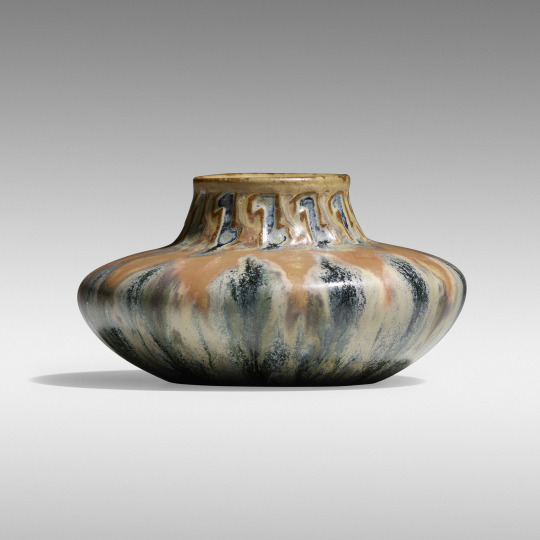
Adelaide Robineau - Vase, USA, c. 1905. Glazed porcelain with excised decoration / 8 × 15 cm. x
11 notes
·
View notes
Photo
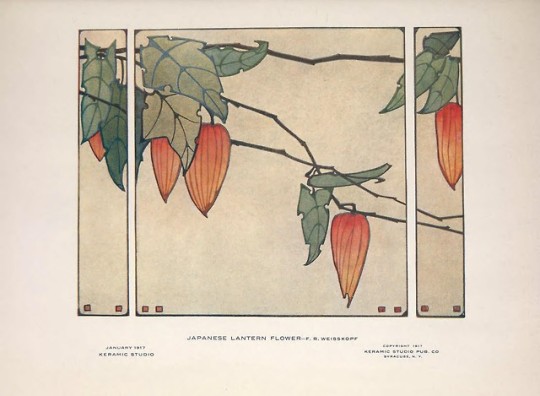
Japanese lantern flowers from Keramic Studio, v.18 (May 1916-Apr. 1917).
The impressive journal was founded by Adelaide Alsop-Robineau and Anna B. Leonard. Find out more about the journal here.
169 notes
·
View notes
Photo

Vase, Adelaide Alsop Robineau, American, 1865–1929, 1910, Saint Louis Art Museum: Decorative Arts and Design
https://www.slam.org/collection/objects/9762/
4 notes
·
View notes